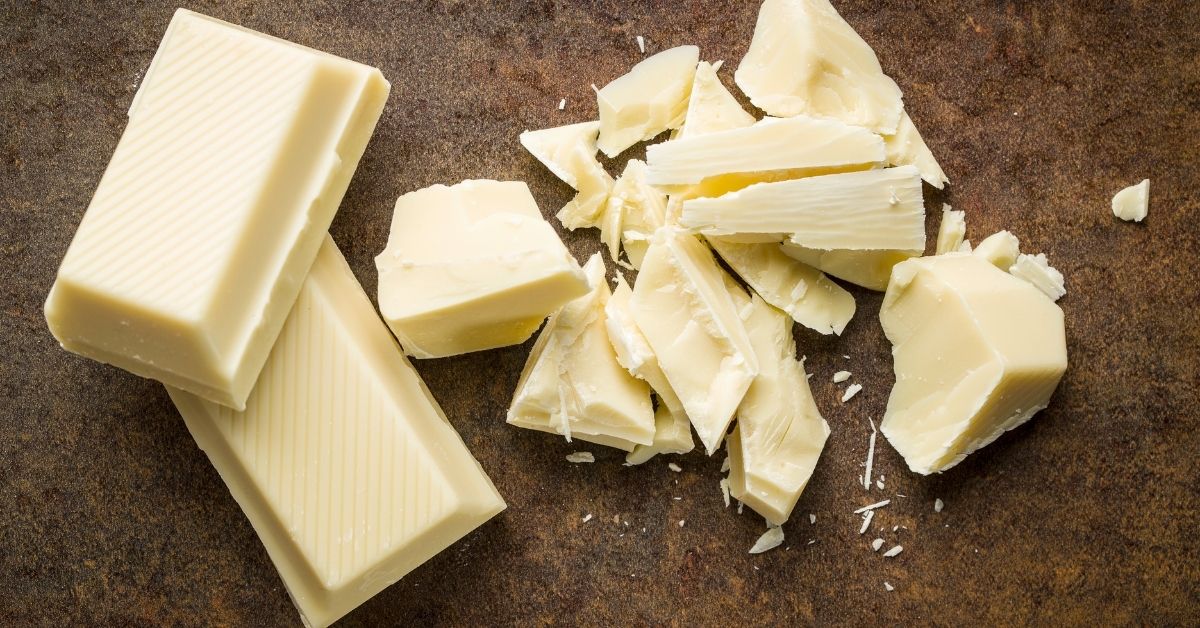Why Is White Chocolate Called Chocolate?

Virtually everyone loves chocolate. However, when it comes to white chocolate, people often take sides: proponents love its creamy texture, versatility, and mild flavor, while critics say it lacks complexity and is overly sweet. But, before you consider how bad or good white chocolate is, let’s first settle a long-standing debate: Why is white chocolate called chocolate?
White chocolate is called chocolate because its main ingredient is cocoa butter, the fat from the cacao. Cacao is a bean where all chocolates come from. While it has a different color and flavor, white chocolate gets the name chocolate since its origin is similar to other chocolate family members.
Is white chocolate a chocolate and is it still a sweet mystery? Stick around and learn more as I explore this delicious indulgence: if white chocolate is real chocolate; why it’s white; the worst, as well as the best white chocolate in the market.
Is White Chocolate Really Chocolate?
White chocolate is real chocolate. I understand that the regulations about what can be called and sold as real chocolate varies worldwide. However, they all agree that to be referred to as chocolate, the product should have a predefined ratio of cocoa solids in their composition. These solids are cocoa mass and butter (both made from cocoa seeds).
Besides, whether white chocolate is real chocolate isn’t simply a matter of its origin and taste. It has been a legal issue with significant ramifications for the confectionery and chocolate industries. Until 2002, FDA termed white chocolate as confectionery and not real chocolate. That was because the standards dictated that chocolate should have cocoa solids to be sold as chocolate.
That changed after Hershey and the Chocolate Manufacturers Association of the United States petitioned the American Food and Drugs Administration to establish new standards for white chocolate. [1] These new standards dictate that white chocolate should contain a minimum of 14% of total milk solids, 20% cocoa butter, and 3.5% milkfat, and a max of 55% nutritive carbohydrate sweeteners.
The Eu has since adopted similar regulations. [2] So, from a legal point of view, white chocolate is widely accepted and known as real chocolate.
Furthermore, science says that is white chocolate chocolate. Professor Zaki in Food Process Engineering and Technology defines chocolate as a dispersion of solid components in a continuous cocoa butter matrix with a “melting in the mouth” property. [3] That description fits white chocolate perfectly.
What Is White Chocolate Made Of?
White chocolate is created using cocoa butter, sugar, milk powder, and lecithin. It’s worth noting that 50% of cocoa beans are butter. So, if you think about it, white chocolate uses half of the components found in cacao beans. If that doesn’t make it real chocolate, I don’t know what else can.
Typically, manufacturers will make chocolate by roasting and grinding cocoa beans to create chocolate liquor. This liquor, a blend of cocoa fiber and butter, is processed to become cocoa solids. For the white chocolate, cocoa fibers are removed from the liquor so that cocoa butter remains. The butter is then added to milk, sugar, vanilla, and other ingredients.
Why Is White Chocolate White?
White chocolate is white despite it coming from the same cocoa bean as dark chocolate. That’s because it lacks cocoa liquor (which is dark-brown in color). Instead, the cocoa butter used gives white chocolate a pale white or caramel-like color. Besides, the cocoa butter properties contribute to its aroma and make it unique in how it feels, melts, and holds.
Who Makes the Best White Chocolate?
Good-quality white chocolate makers use cocoa butter as the primary source of fat. But some cheaper versions might use palm oil and other unhealthy fats. Hence, always check the nutritional facts and ingredients labels to ensure the chocolate doesn’t have any unhealthy trans-fats. Also, remember that when another fat replaces cocoa butter, that cannot be called white chocolate.
Quite a few companies are making the best white chocolate in the market. Their chocolate has more butter and less sugar, providing a soft, rich, and silky texture that melts into cream and custards. Valrhona is one such brand that two of their white chocolates take the top spots: Ivoire and Opalys.
While the FDA requires white chocolate to have a minimum of 20% butter, Valrhona Ivoire comprises 35% butter. The extra fat makes an excellent stabilizer for buttercream, and it has a silky texture and the flavor of fresh milk. Sweetness is restrained, so this is an all-too-easy snack.
Similarly, Valrhona Opalys has 33% cocoa butter (above the bare minimum). As a result, it has a fresh, balanced, and super-silky texture. This one is great for those who like a gentle touch of vanilla in white chocolate.
To conclude, white chocolate is a dream for anyone with a sweet tooth. Its velvety, creamy taste is an excellent alternative for people who find deep cocoa flavors of dark chocolate too rich. It’s also ideal chocolate for anyone who doesn’t want to consume the high levels of caffeine in dark chocolate.
